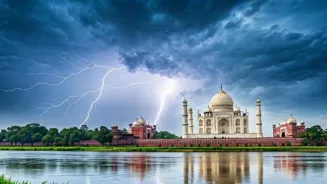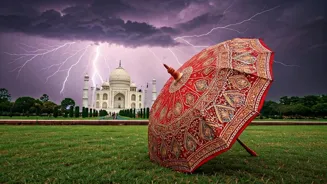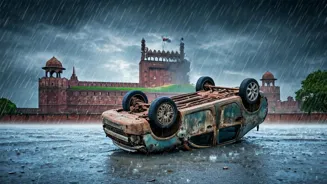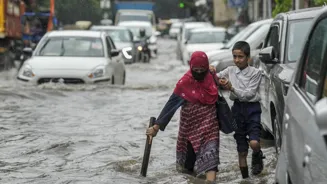Born of Heat
Thunderstorms are mainly born from warm, moist air rising rapidly. This rising air cools and condenses, forming towering cumulonimbus clouds. It’s like
a giant pressure cooker in the sky! The process is often fuelled by the Indian summer heat – think hot air, rising rapidly, and creating these dramatic displays, all thanks to the natural forces at play.
The Lightning Bolt
Lightning, a dramatic visual, is a giant spark of electricity. It can travel at speeds up to 270,000 mph! Inside a storm, positive and negative charges build up, creating a massive electrical difference. When it overcomes the air's resistance, zap! A lightning bolt streaks towards the ground, painting the sky in moments of brilliance.
Thunder's Roar
The sound of thunder follows lightning, right? Thunder is created by the rapid heating of air around a lightning strike. This sudden heat causes the air to expand explosively, creating a shockwave that we hear as thunder. The distance you are from the lightning also affects how quickly you hear the boom, similar to the echo in a crowded marketplace.
Storm Chasers Unite
Did you know that thunderstorms come in different shapes and sizes? Some are isolated cells, while others are organised into multi-cell storms or even supercells. Supercells are the heavy hitters, lasting for hours and often bringing hail and even tornadoes, causing a drama like a Bollywood movie. They're a sight to behold, if you're a trained expert!
Global Thunderstorms
Thunderstorms are a worldwide phenomenon, with some regions experiencing them more frequently. The tropics, including parts of India, see a lot of them. Think of it like the monsoon season – the cycle of nature's drama playing out across the globe. These storms are a crucial part of our planet's weather systems, keeping the balance.












